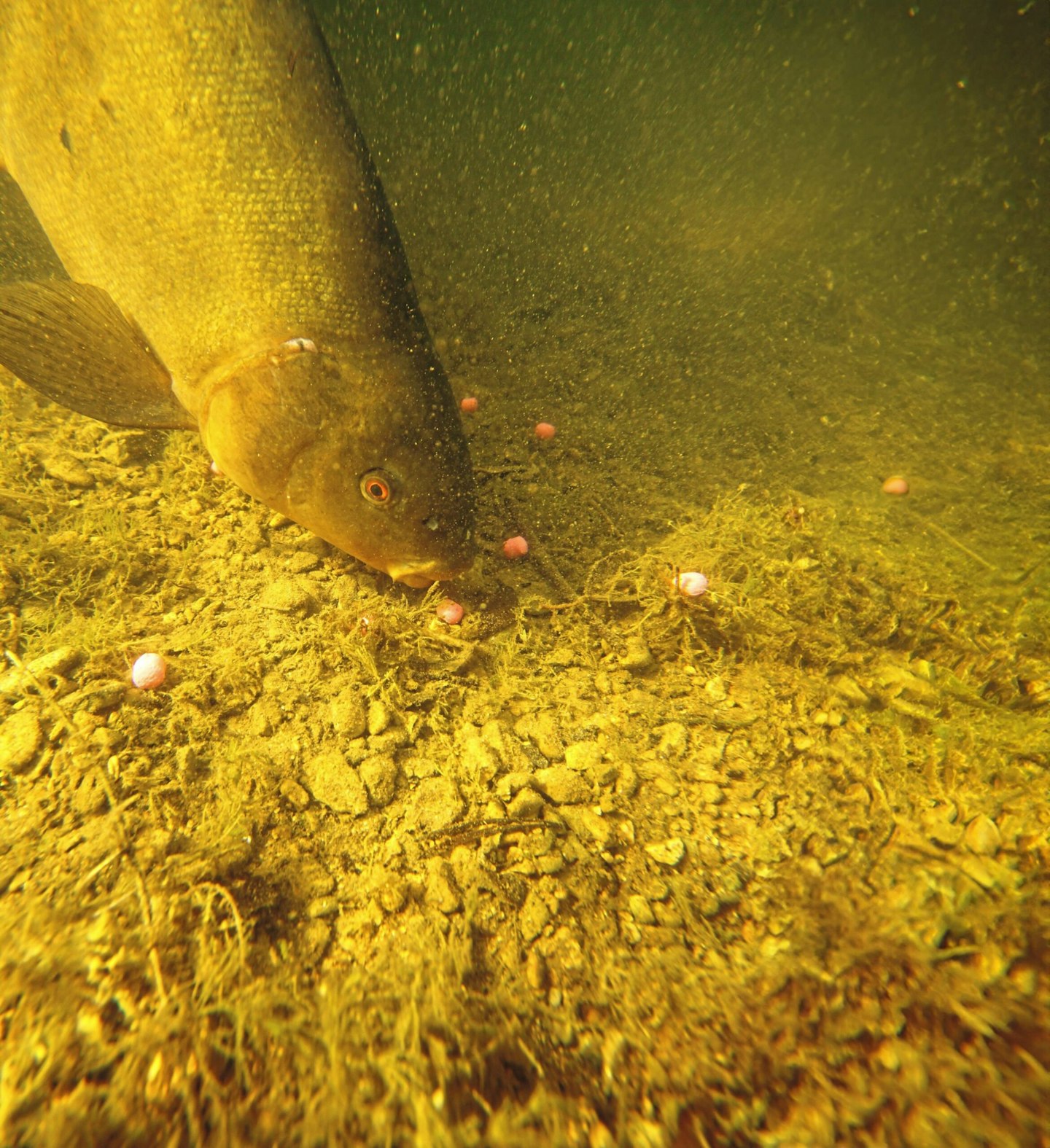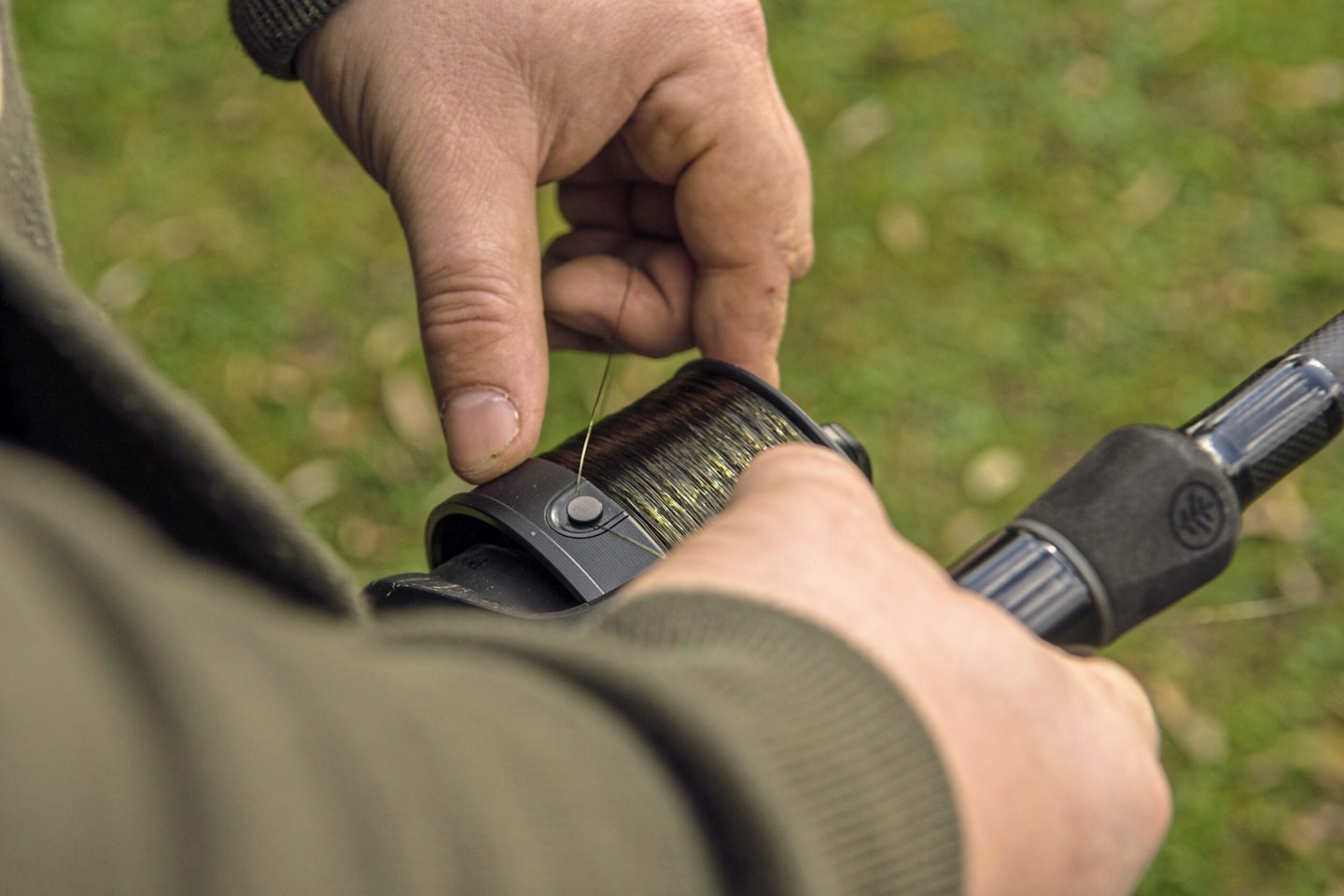Sit back, close your eyes and try to picture the perfect tench fishing spot. The banks will be lined with dense reedbeds, and lily pads are dotted around the swim just a couple of rod lengths out. Pinprick bubbles break the surface as the fish grub around in the soft silt below.
As idyllic as it sounds, the chances are that there will also be a few potentially tackle-busting snags or dense weedbeds not too far away either, and on many waters the presence of such ‘features’ can create challenges. Yorkshire-based specimen angler Mark Dunwell spends this period every year targeting the species, and he has some excellent tips to help you catch more tench!
WANT TO CATCH BIG TENCH? HEAD TO ONE OF THESE AWESOME WATERS.

Map out the swim
Tench love to live close to cover, and even if you can’t see any visible features on the surface, there are bound to be plenty below the waterline. Fishing over certain substrates can cause presentation problems, so it’s important to work out the contours of the lakebed in your swim before deciding where to fish.
For example, your rig can sink into soft silt, while rocky areas are difficult to feed efficiently and also increase the chances of damage occurring to your mainline or hooklength. I start off by casting a reasonably heavy lead around my swim, feeling it down and dragging it back to try to understand what type of lakebed I’m dealing with.
It’s best to find an area that has a smooth, preferably gravelly bottom, and then to have two or three more chucks in roughly the same zone to make sure the spot is of a sufficient size that you can lay down a carpet of loosefeed over it.
DON'T GO TENCH FISHING WITHOUT TAKING THESE BAITS WITH YOU!

Clip up the rods
Once I have found the perfect spots, I’ll clip up and use distance sticks to work out exactly how far out I will be casting. I’ll then switch the lead on that rod for a Korum Bopper so that I can put down the initial bed of loosefeed.
With the marker/spod rod clipped up, I’ll then get the rods that I will be fishing with and use the sticks to clip them up at the same distance. This ensures that I will be putting my baited rig directly over the top of the loosefeed.
THE BEST SPOD RODS WILL HELP YOU BAIT UP ACCURATELY SO YOU CAN CATCH MORE TENCH.

Prime your spots
The tench have come out of their winter hibernation at most fisheries, but it’s still wise to err on the side of caution when baiting up at the start of a session. How much feed you introduce to get things going will be dictated by the size of the venue, on larger venues, five Spombs is a great starting point.
That’s enough to create plenty of attraction, but without risking overfilling the fish when they arrive. An even blend of SonuBaits Squid & Krill and Thatchers groundbait will be the carrier, with hemp, dead red maggots and 2mm pellets mixed in to add variety.
Once I’ve caught a fish I’ll introduce another spod of loosefeed, but if the start is quiet, I’ll happily wait several hours without introducing anything else. It can be counterproductive to overfeed, as any fish that turns up in the swim would then have a better chance of avoiding the hookbait.
YET TO CATCH A TENCH? OUR BEGINNERS GUIDE WILL HELP YOU CATCH YOUR FIRST ONE!

Toughen up!
Even if you’ve found a lovely area to fish over, the chances are that there will still be snags or weedbeds nearby, and unless you can stop them in their tracks once hooked, tench will soon find them and this could lead to a lost fish, which is far from ideal.
It’s vital that you take control the moment a fish is hooked and having tackle that allows you to pile the pressure on from the word go is the way to achieve that. I’ll use a 12ft 1.5lb TC rod, and a 6000-sized reel spooled with 10lb mainline. I use a Method feeder with a 4inch hooklength of 10lb coated braid to a strong size 12 or 14 hook. This strong but still subtle set-up allows me to dictate the fight right from the off.
THE BEST FISHING REELS WILL HELP YOU LAND TENCH OF ALL SIZES!

Rotate your hookbaits
You’d think that a shoal of tench that have dropped their guard would eat anything, but it’s amazing how quickly they can wise up to a trap. A certain hookbait can catch two or three fish in quick succession before it loses its effectiveness for a period. There are often fish still in the peg, but they’ve become a little more cautious, and a change of hookbait can be an almost instant catalyst for bringing the next bite.
I tend to rotate between wafters, pop-ups and segments of worm. They all bring something different to the table and regular switches will reduce the number of dry periods that you experience.
THE WORM KEBAB IS AN EXCELLENT METHOD FOR TENCH, FIND OUT MORE HERE...

